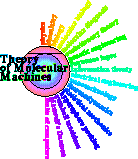
Annual Meeting and Science Innovation Exposition
Philadelphia, Pennsylvania
Track: Emerging Science: Transforming the Next Generation
Session number: 101.0
Georgi P. Gladyshev, Academy of Creative Endeavors, Russia
|
To join our discussions about information theory in biology, see the bionet.info-theory news group |
The year 1998 is the 50th anniversary of the publication by Claude Shannon of "A Mathematical Theory of Communication". By proving that communication can proceed with as few errors as desired, this work opened the doorway to global and planetary communications systems. We owe the purity of compact disc music renderings and the clarity of international phone calls to this seminal work.
1998 is also a year booming in knowledge about genetic sequences, with the recent completion of bacterial chromosomes, yeast, and more than 1% of the human genome. Remarkably, the same theorems that Shannon proved for telephone systems apply equally well to biological systems, ranging in this symposium from the dynamics of entire ecosystems down to the details of molecular interactions.
Finally, 1998 is the 125th anniversary of the publication by J. Willard Gibbs of his first thermodynamic work "Graphical methods in the thermodynamics of fluids". This theory has been of limited or questionable use in biology because it applies to isolated and closed, near equilibrium systems. Recent advances in the thermodynamics of quasi-closed systems and the stability of cellular components (supramolecular thermodynamics) are complementary to general thermodynamic and informational theories. At the molecular level, information theory is being used to make clinical predictions of the severity of genetic diseases and to understand how molecules process information and energy.
This symposium is dedicated to the idea that the fusion of thermodynamics and information theory will create a solid foundation for future biological science.
Ecosystem dynamics (unlike mechanical behaviors encountered in ontogeny) appear to be causally open. Karl Popper exhorted the development of a "calculus of conditional probabilities" to quantify open systems. Information theory provides the required calculus to make of ecological dynamics a template for a truly "evolutionary theory of knowledge."
Full abstract
Press Release (html)
Press Release (PostScript)
The conformational stability of proteins is determined by the Gibbs free energy of folding (). Proteins within living cells interact to form supramolecular structures. The strength of interaction is described by the interaction energy (
). Differential scanning calorimetry can be used to measure
and
which vary during evolution, growth, and conditions of stress as selection for favorable molecular interaction occurs.
Full abstract
Although from the point of view of general laws of nature there is no direct link between thermodynamics and information theory, the conclusions of information theory should in principle relate to thermodynamic tendences of biological phenomena and processes. An interdisciplinary discussion of the results of a new branch of science - hierarchical thermodynamics (supramolecular thermodynamics of tissue and its aging in particular) and information theory in biology (in particular) make for better understanding of the world around us. The first point for discussion is to understand the sense of the correlation between these theories. The second point is to discuses the perspectives of practical applications of supramolecular thermodynamics and information theory for biology and medicine.
Full abstract
Information is a quantitative measure of conservation among aligned protein or nucleic acid sequences. Visual displays of information content show the contributions of all of the sequences in the alignment or how representative any individual sequence might be. Molecular biology applications include design of PCR experiments, identification of binding sites, and analysis of protein/nucleic acid interactions, mutations, and polymorphisms.
Press Release
Full abstract
The topic will be advanced molecular machine theory, Levels 3 and 4.
For a review of levels 0 to 2, see Nanotechnology, 5(1):1-18, 1994.
Press Release
Full abstract* Symposium Organizer
This page is https://alum.mit.edu/www/toms/presentations/aaas1998


Schneider Lab.
origin: 1997 September 15
updated: 1998 June 12

U.S. Department of Health and Human Services
|
|
|
USA.gov
|
Policies
|
Viewing Files
|
Accessibility
|
FOIA